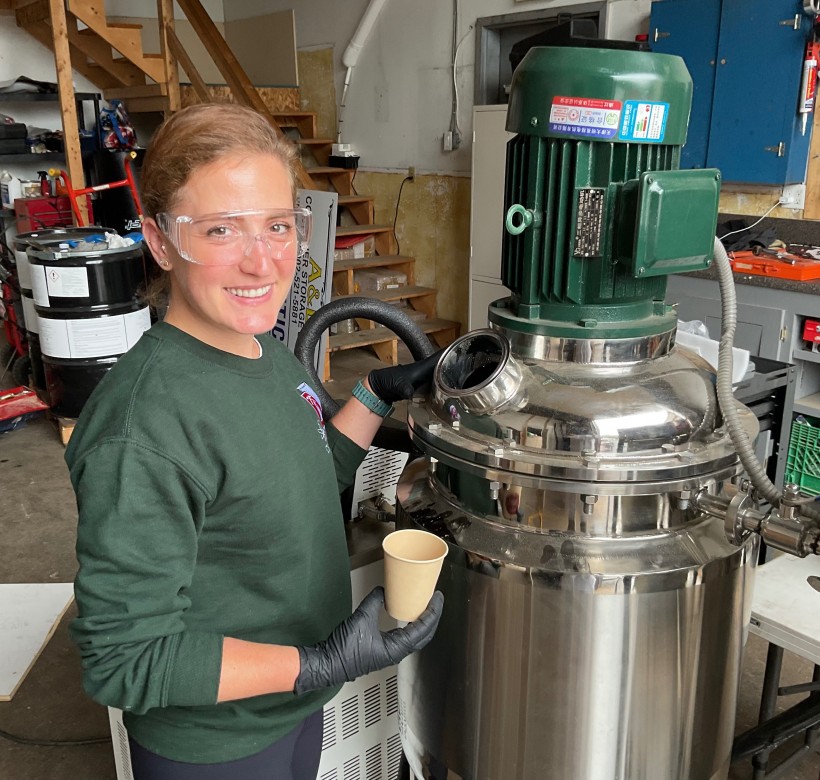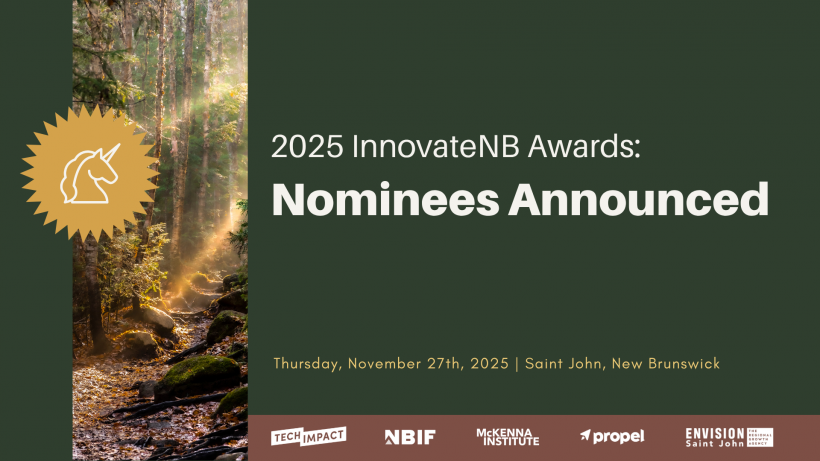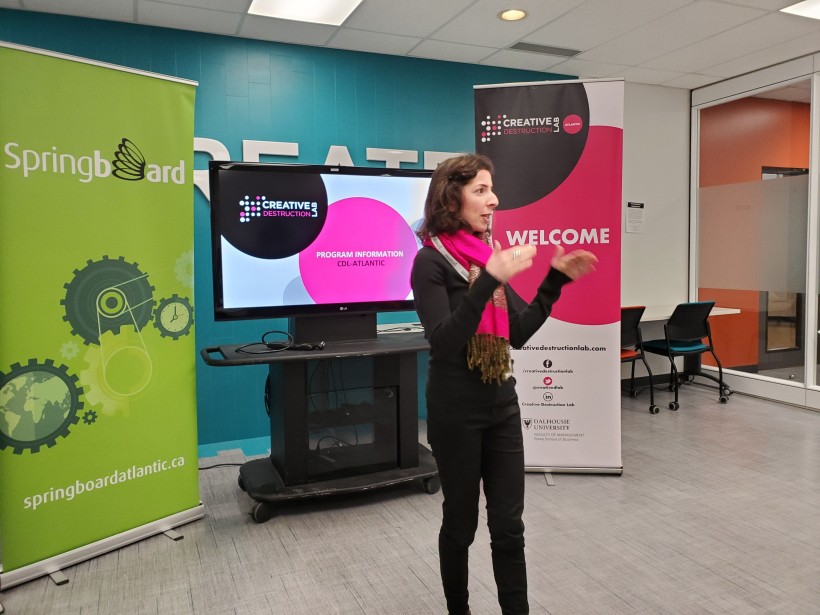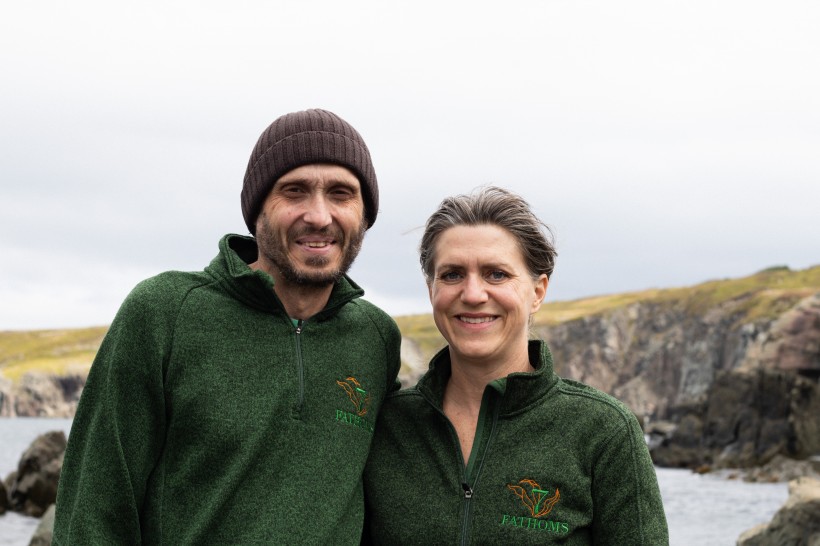Sponsored Content
Hart Devitt can truthfully say he’s gone to the far side of the world and never found an organization comparable to Springboard Atlantic.
The Director of Industry and Government Services at University of New Brunswick spent several years working at the University of New South Wales in Australia.
And now that he works for an Atlantic Canadian university, he’s more than familiar with the situation not only in Canada but in the U.S. as well.
He’s never heard of another organization that bridges the gaps between industry and a community of post-secondary institutions quite the way Springboard does in Atlantic Canada.
“It’s unique in Canada and I didn’t see anything like it in Australia,” said Devitt in an interview. “Our region is unique, and I think we’ve built a network to fit the region. We only have 2.5 million people and we’ve got 19 different post-secondary institutions in it.
“It means government and industry in Atlantic Canada have great access to resources and research. In other places, if someone from government or industry wanted to have this access to these sorts of resources, they’d have to go knocking on a lot of doors.”
Launched in 2006, Springboard Atlantic is celebrating its 15th anniversary this year, so it seemed like an opportune time to talk to some of the people around the region who have helped to develop the organization. In talking to these executives, several themes emerged, repeated by most if not all of the interviewees.
One such theme was the “uniqueness” of Springboard – an organization that brings together post-secondary institutions of different sizes, specialty areas, and provinces to jointly tackle industry challenges and help build research capacity in the region.
Organization Has Evolved
Another common theme was how much Springboard Atlantic has changed in 15 years, and that the environment in which it operates has changed as well. In 2005, the academic and innovation communities were markedly different than they are today.
Q1 Labs and Radian6 hadn’t exited yet, and St. John’s-based Verafin was still a startup in every sense of the word. And Atlantic Canadian universities handled all technology transfer, commercialization and research contracts with industry individually. It was a system in which these institutions were seen as competing against each other to work with industry, which often prevented them from collaborating. Each institution’s reach only extended as far as that of their own technology transfer officers.
“In those days, I think it was very disjointed,” said Daryl Genge, who has been the President and CEO of Springboard since November 2017.
“Every university and college – or at least those that had technology transfer offices and had people in that space – pretty well acted independent of each other. Also, more of the focus was simply on getting institutional IP into the marketplace. The resources just weren’t there to build and maintain long-term business partnerships.”
Early in the century, Atlantic Canadian universities and colleges realized they could achieve more by working together. The institutions launched Springboard Atlantic so a single organization could work with government and build the knowledge and capacity across institutions to commercialize promising ideas. This single group would help them connect with industry when it needed applied research. By pooling their resources, Atlantic Canadian universities and colleges now had a single, larger body that could compete against the larger institutions elsewhere in Canada. Early on, Springboard went through growing pains, getting used to its mission and trying to make colleagues throughout their schools understand their value and that it was an improvement over the old system.
“Prior to Springboard, we had what we then called technology transfer professionals, and it was really a struggle for us to maintain funding for our office,” said Leigh Huestis, Director of the Office of Industry and Community Engagement at Acadia University. “One of the early benefits of Springboard was really this idea that we would have funding at least for three years. That allowed us to focus on more important things.”
With institutions of different sizes, locations and practices, Huestis said it took a while for the members to acclimatize themselves to the new organization and figure out what resources were available. But they were no longer so isolated. “From the very beginning, one of the benefits was that we could pick up the phone and we all were able to communicate with each other,” she said.
Over the years, Springboard Atlantic has grown, and the organization and the environment in which it operates have both evolved. There are now 19 universities and colleges backing Springboard, and its network of professionals has grown to 30.
Applied Research
Springboard is known for being the organization that links these institutions to industry and one another for the purposes of applied research. It means each of these executives can direct a corporation to the most appropriate institution across the network. If a corporation contacts Memorial University of Newfoundland about an issue in, say, veterinary medicine, the MUN exec could refer the client to University of Prince Edward Island, which operates the region’s only veterinary college. Or maybe they’d agree the project should tap the expertise of several institutions – easily done within the network because the industry engagement professionals have become aware of what’s happening at other colleges and universities.
“Our view now is it’s the relationship that matters – the relationship with the industrial partner or with the startup that’s been formed at our institutions,” said Genge. “And the benefits aren’t just with the partner. The benefits will flow back to the institution if the partner becomes successful.”
During the past 15 years, Springboard Atlantic has helped more than 4,000 technologies be licenced from post-secondary researchers in Atlantic Canada, and completed research projects totalling more than $5.3 billion.
Springboard began to count its projects with industry in 2011, and since that time it has completed almost 20,000 projects with companies and hosted more than 1,100 workshops.
Industry engagement is only part of the story. Since it began 15 years ago, the innovation economy has blossomed in Atlantic Canada. Springboard has had a hand in funding and supporting many companies based on research at its member institutions.
For example, it supported ABK Biomedical, a medical device company that grew out of research conducted at Dalhousie University and raised US$30 million in venture capital in 2019. It also aided Nautilus Biosciences, which uses marine microbial organisms to discover new bio-medical materials and other products. Nautilus was purchased by the British specialty chemical-maker Croda International in 2018. In total, Springboard Atlantic has supported more than 650 startups that have been spun out of its member institutions, which have contributed to the growth of the Atlantic Canadian startup community.
“What it’s really done is it’s highlighted the value of the startup community and the growth in the region,” said Genge, when asked how the startup community and Springboard have grown together. “From a Springboard perspective, it just highlights the value that’s found within the institutions. The growth in startups has also created demand for students and researchers who can help figure out what the true potential of their idea is.”
In its more recent history, 2019 was a seminal year for Springboard Atlantic. That was the year it received $9.6 million in funding from the Atlantic Canada Opportunities Agency, which was matched by $5.1 million from its member institutions. At the same time as the funding, the network was firing on all cylinders and the Springboard community (executive, institutions, stakeholders) turned its attention to the best way to expand its role.
Working on New Projects
At this time, the Springboard team began working on an exciting project tentatively known as the “Tables” – brainstorming sessions with key players in specific industries to develop a deeper understanding of industry problems and how institutional researchers could help.
The idea was to gather industry executives in the same room as researchers and Springboard’s industry liaison professionals to devise deeper and longer-term strategies for how the member institutions could help industrial growth. The Tables will soon be renamed and the first “Table” will be launched this year, focusing on cleantech.
As Springboard continues to evolve in the coming years, these Tables will play a more and more important role in its work. Huestis said another area where Springboard is increasing its focus is diversity and inclusion, and ensuring that under-represented groups can benefit from the network’s mission.
“We’re looking at our own activities all the time,” she said. “Are we paying enough attention to working with Black entrepreneurs or First Nations Groups? And what can we do to place more emphasis on this going forward?”
As they look to the future, the members of the Springboard Atlantic community have a unanimous view on one further thing: the group’s greatest achievement in the past 15 years is the creation of the network itself, and the organization must strive to maintain it. They view the network as a whole that is greater than the sum of its parts, because together the member institutions do more than they could on their own.
“It’s important to driving growth in the region,” said Genge. “It’s all about the Springboard network, but it’s also about how the network has brought that talent out of the universities and colleges and into the community.”
Added UNB’s Devitt: “I hope that it continues to do what it’s always done and I’m hopeful that it becomes more recognized. Broader recognition for the network on what we can provide to industry and to government is key. We’re consistent and reliable for the individual members, and consistency and reliability are huge.”

About Springboard Atlantic
Springboard is a network of Industry Engagement Professionals at 19 post-secondary institutions throughout Atlantic Canada. Funded in large part by ACOA and its members, the Springboard network works together to increase the competitiveness of Atlantic Canada’s industries through the commercialization of academia and industry-led research. In the last three years, Springboard has completed more than 7,000 collaborative research and development projects with industry and supported the development of 350 startups.
For more information on Springboard Atlantic visit SpringboardAtlantic.ca.








